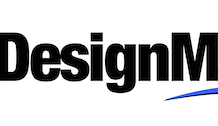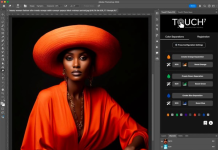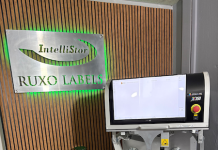Litho and digital printers are increasingly using laser cutting and engraving solutions, especially in their finishing departments, so that they no longer have to outsource work, saving time and money, and setting themselves apart from competitors with customised products.
Some of the advantages of laser cutting over traditional methods include: creating customised products with fine details, sharp edges and precise details, which is especially important in packaging design and promotional items. Lasers are also precise, and offer higher speeds than traditional cutting systems.
Some of the applications suitable for laser cutting and engraving include: kiss cutting, embossing, etching, foiling, cutting paper to size, which is quicker and smoother than a guillotine for smaller runs, and rubber stamps.
We spoke to business owners in the laser cutting and engraving industry:
LARRY SMITH, SA ARGUS
HAVE YOU SEEN AN INCREASE IN PRINTERS ADDING THESE SERVICES TO THEIR BUSINESSES?
Yes. Printers (like those in many other industries) find that diversifying their product range keeps existing customers coming back more often, and they end up buying products they didn't think they needed. This is a great way of reducing the risk of customers going to competitors who offer more exciting and diverse product offerings.
There is a printing company in Pretoria, one of the biggest in the region, that started looking at options to expand their existing product range two years ago. The printer recently bought a second laser machine from SA Argus. His products include cutting and engraving on wedding invitations, personalised diaries, kiss cutting, corporate gifts, and more. There are at least eight other 'traditional printing' companies all over South Africa and Namibia that have similar success stories.
HOW CAN LASER CUTTING AND ENGRAVING ENHANCE THE EXISTING OPERATIONS IN A PRINTING BUSINESS?
Traditional processes like embossing, foiling, rubber stamps, die cutting, kiss cutting and scoring setups could be reduced a great deal by laser machines. No expensive steel or copper dies are needed and delivery of the end products are much faster. Human error is also reduced by laser machines. The 'Easy Sample' concept is ideal for the customer who needs to touch and feel what the end product will look like.
Laser cutting allows you to create intricate shapes and patterns that would be impossible to achieve using traditional die-cutting. A wider variety of materials can be used to produce unique products. We offer an all-in-one machine capable of cutting, engraving, scoring, perforating, marking, die and kiss-cutting.
WHAT PRODUCTS DO YOU HAVE THAT WOULD BE USEFUL FOR PRINTERS?
We have an extensive range of machines that can suit any company. We have our own in-house R&D department and carry a South African warranty on all parts. SA Argus machines are assembled in South Africa and are based on a South African design.
—————————————————————
NARDUS MOUTON, GENCOTECH LASER MARKING
Mouton has seen an increase in printers adding these services to their businesses.
HOW CAN LASER CUTTING AND ENGRAVING ENHANCE THE EXISTING OPERATIONS IN A PRINTING BUSINESS?
End users use our laser systems for die cutting or centre line cutting with litho printing. On our laser systems, you get a module called the ASS Module (AAS Contour Cutting Device). Developed by LaserPro, AAS is an exceptionally user-friendly operation which offers accurate and faultless contour cutting by automatically tracking the position of graphics. The working area will be reduced to 510 x 410mm on a Spirit and 790 x 580mm on an X380 when the AAS module is installed.
Some of the many applications possible include: textile and fashion, packaging, sign and display and paper crafts.
WHAT PRODUCTS DO YOU HAVE THAT WOULD BE USEFUL FOR PRINTERS?
We have an extensive range of vinyl cutters, laser engravers, laser cutters, embossing tools, UV printers and more.
Companies that invest in our laser systems mainly go for larger-sized laser systems. These include our Spirit GLS (860 x 610mm work area) and X380 (960 x 610mm work area). We also now have the X500 with a working area of 1300 x 916mm. Through the years, these clients have grown and we now have 16 clients using these applications that we are aware of, reaching as far as Zambia and Mauritius in our distributorship area for GCC (distributors in Africa and Mauritius for GCC).
————————————————————–
LYNN VAN DEN BERG, TRODAT SOUTH AFRICA
HOW IS LASER CUTTING SUPERIOR TO TRADITIONAL METHODS?
As printed materials are cut absolutely accurately, assisted by an optical detection system, no cutting dies are required. The laser is the more economical alternative, especially for small series of up to 1000 pieces. The costs for the manufacturing, maintenance and storage of cutting dies fall away.
The Trotec JobControl Vision module reads registration marks on printed substrates and
automatically cuts to the precise contour of the graphic. It compensates for distortion common in the printing process.
HOW CAN LASER CUTTING AND ENGRAVING ENHANCE THE EXISTING OPERATIONS IN A PRINTING BUSINESS?
Laser cutting gives printers the opportunity to stand out from the crowd and achieve higher profits. It means added value for printed materials. Whether business cards, brochures, packaging or labels, the use of laser cutting or engraving increases the quality and selling prices of these products.
By engraving logos, individual laser cutting of names and ultra-sophisticated ornaments, you set yourself apart from the competition. For small and medium runs, laser processing is the ideal finishing solution. It saves you the time and money you would spend on the production of conventional die-cutting tools.
WHAT PRODUCTS DO YOU HAVE THAT WOULD BE USEFUL FOR PRINTERS?
Trotec lasers can be equipped with the optional JobControl Vision module. This is not a third party camera or software application but rather integrated into the laser control logic. You can print directly from your graphics or CAD software and you are ready to start. It works with all common file formats.
This article was published in the Africa Print Journal magazine.





















